The harvest of our Umbrian gem, Sagrantino Montefalco, has just come to an end for this year. Only one type of grape but coming from different types of vineyards, and declined in three different types of wines: Sagrantino Ma.Gia, Sagrantino dry and Sagrantino Passito. Find out with us what the results of the 2020 harvest are!
Montefalco Sagrantino Ma.Gia D.O.C.G.
With a fully manual harvest, carried out in mid-October 2020, here are our wonderful bunches of Sagrantino grapes from a specific vineyard: the Fonte Petrella vineyard, which is the best Montioni vineyard!
During two splendid days, sunny and clear, the harvest of these fruits took place and they will ferment in a natural way strictly inside our precious French barriques. Our barriques come directly from the Tronçais forest, one of the best in the Allier department in France.
The racking, the process by which wine and pomace are separated, is scheduled for December 28th.
>> While waiting for the result you can try our Montefalco Sagrantino Ma.Gia DOCG 2015, with an intense taste and scent of liquorice, blackberries, cherries and chocolate!
Here are some pictures of the highlights of the harvest in the Montioni vineyards in Umbria:


Ecco alcune immagini dei momenti salienti della raccolta nei vigneti Montioni in Umbria:
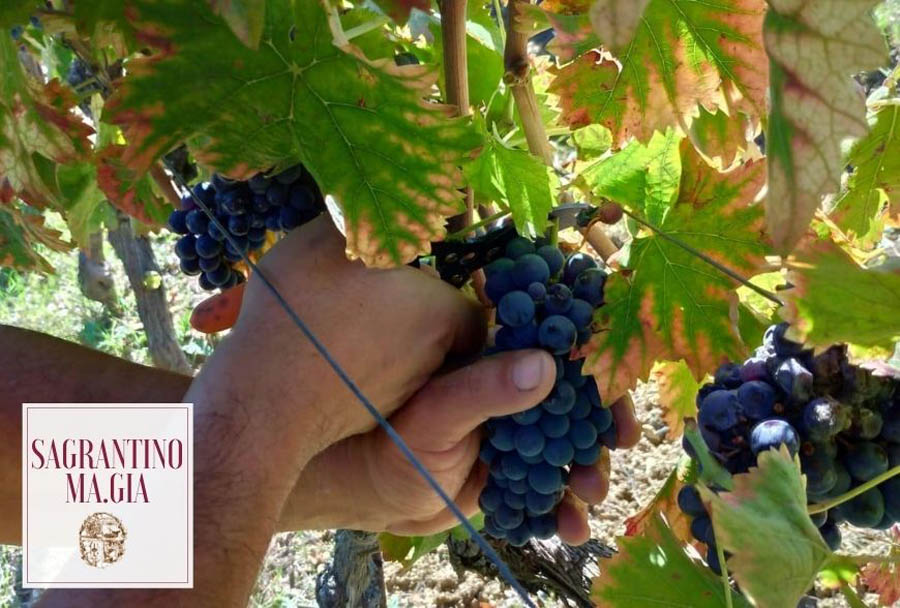
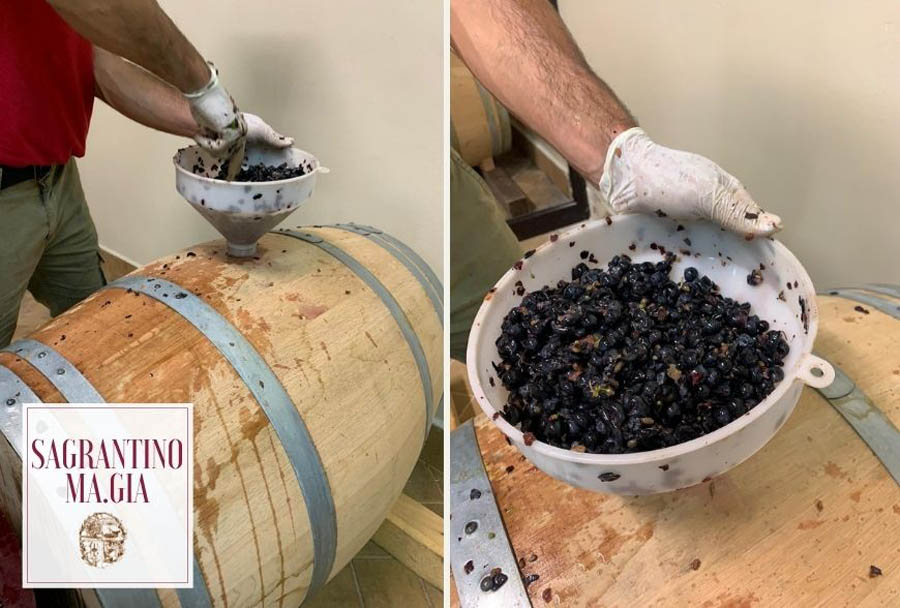
Montefalco Sagrantino D.O.C.G. (Dry)
Collected strictly by hand on October 17th, our Sagrantino grapes burst with health, beautiful to the eye and to the touch!
We note a decrease in production of about 15%, but absolutely physiological given the harvest obtained in 2019, absolutely and incredibly abundant.
How do the clusters appear? Equipped with a beautiful thick and crunchy skin, ideal for the natural fermentation of about 45 days traditionally carried out by us. The juice also appears really thick and very sweet.
>> While waiting for the result you can try our Montefalco Sagrantino DOCG 2016, typical for its spicy aromas and perfect to accompany aged cheeses, game and succulent roasts.
Here are some pictures of the highlights of the harvest in the Montioni vineyards in Umbria:
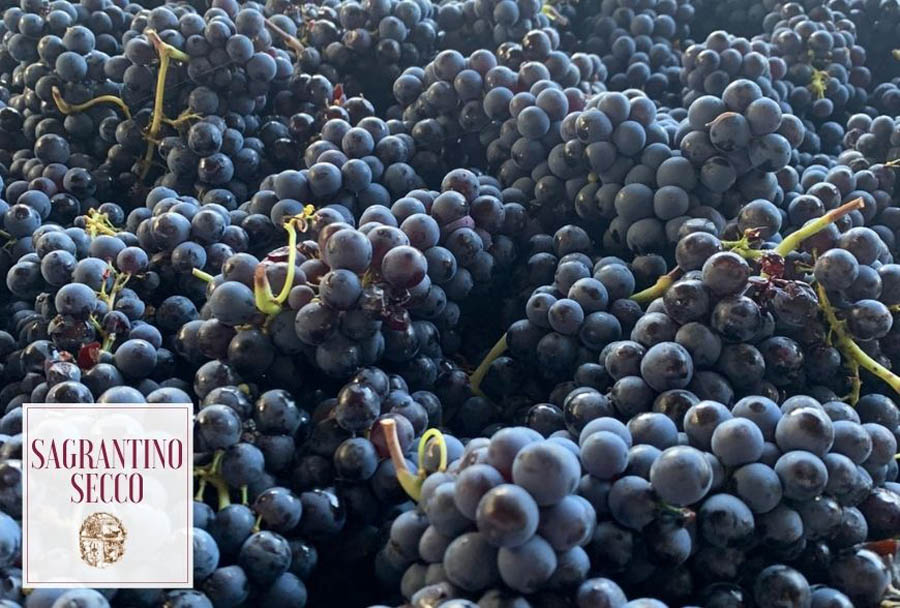
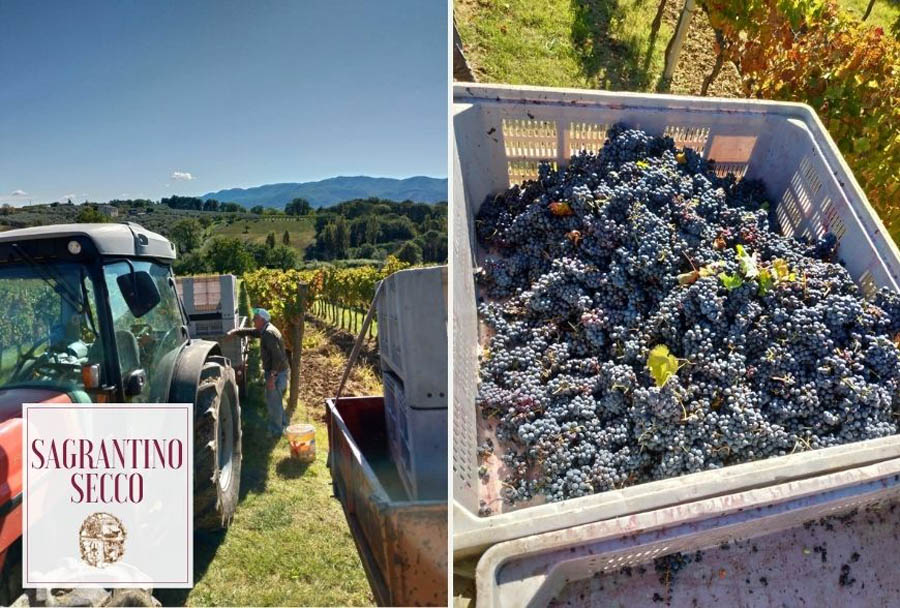
Montefalco Sagrantino PASSITO
As is well known, Sagrantino grapes were originally used exclusively to produce this sweet wine and considered very special especially in our territory.
Still today, as in the past, Sagrantino Passito is highly appreciated! Our harvest brought us very healthy and very beautiful bunches, coming directly from a specific vineyard called “Li Cicitti”. Why exactly from this vineyard? Because here the average age of the vines is 30 years!
Currently the bunches have been left to dry, we wait another two months to then work the grapes and make this jewel of ancient Umbrian tradition.
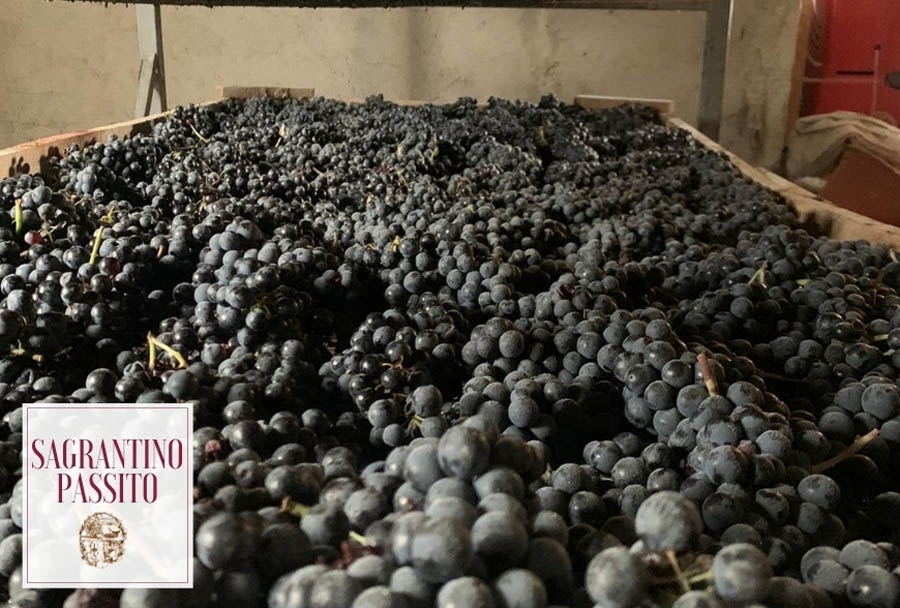
On occasion, the winemaker may decide to leave them in if the grapes themselves contain less tannin than desired. This is more acceptable if the stems have ‘ripened’ and started to turn brown. If increased skin extraction is desired, a winemaker might choose to crush the grapes after destemming.
Wine is one of the most civilized things in the world and one of the most natural things of the world that has been brought to the greatest perfection, and it offers a greater range for enjoyment and appreciation than, possibly, any other purely sensory thing.
Ernest Hemingway Tweet
Removal of stems first means no stem tannin can be extracted. In these cases the grapes pass between two rollers which squeeze the grapes enough to separate the skin and pulp, but not so much as to cause excessive shearing or tearing of the skin tissues. In some cases, notably with “delicate” red varietals such as Pinot noir or Syrah, all or part of the grapes might be left uncrushed (called “whole berry”) to encourage the retention of fruity aromas through partial carbonic maceration.
The Grapes
The quality of the grapes determines the quality of the wine more than any other factor. Grape quality is affected by variety as well as weather during the growing season, soil minerals and acidity, time of harvest, and pruning method. The combination of these effects is often referred to as the grape’s terroir.
Grapes are usually harvested from the vineyard from early September until early November in the northern hemisphere, and mid February until early March in the southern hemisphere.
In some cool areas in the southern hemisphere, for example Tasmania, harvesting extends into May. The most common species of wine grape is Vitis Vinifera, which includes nearly all varieties of European origin. The most common species of wine grape is Vitis Vinifera, which includes nearly all varieties of European origin.

Manual harvesting is the hand-picking of grape clusters from the grapevines. In the United States, some grapes are picked into one- or two-ton bins for transport back to the winery. Manual harvesting has the advantage of using knowledgeable labor to not only pick the ripe clusters but also to leave behind the clusters that are not ripe or contain bunch rot or other defects. This can be an effective first line of defense to prevent inferior quality fruit from contaminating a lot or tank of wine.
Destemming is the process of separating stems from the grapes. Depending on the winemaking procedure, this process may be undertaken before crushing with the purpose of lowering the development of tannins and vegetal flavors in the resulting wine. Single berry harvesting, as is done with some German Trockenbeerenauslese, avoids this step altogether with the grapes being individually selected.
Crushing is the process when gently squeezing the berries and breaking the skins to start to liberate the contents of the berries. Destemming is the process of removing the grapes from the rachis (the stem which holds the grapes).
In traditional and smaller-scale wine making, the harvested grapes are sometimes crushed by trampling them barefoot or by the use of inexpensive small scale crushers. These can also destem at the same time. However, in larger wineries, a mechanical crusher/destemmer is used. The decision about destemming is different for red and white wine making. Generally when making white wine the fruit is only crushed, the stems are then placed in the press with the berries. The presence of stems in the mix facilitates pressing by allowing juice to flow past flattened skins.
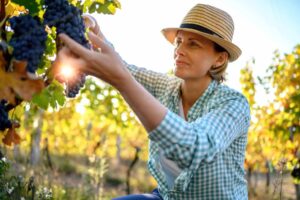
Katerina Monroe
@katerinam • More Posts by Katerina
Congratulations on the award, it's well deserved! You guys definitely know what you're doing. Looking forward to my next visit to the winery!
